In India, Hospitals accounts for 71% of total healthcare revenues in the country. Private Hospitals have the largest share of healthcare delivery and will be amounting to 81% by 2015. Do these numbers communicate possibilities about India being accessible to quality and affordable healthcare? You need to look at these numbers with an “India-Wide-All-Inclusive” perspective. We were in a state of war with the communicable disease for long. While our war ended in a truce with communicable diseases only to realize that we are into yet another trap of – Lifestyle Diseases, stashing away our 50% of in-patient beds spending. We have a long journey ahead for quality and sustainable healthcare services delivery.
All the above metrics represents only an Urban India. There is one another India – Rural India constituting 70% of us. If 2 beds/1000 is a goal that India wants to meet by 2025 – we will need 1.8 million beds in various hospitals manned by 1.54 million doctors and 2.4 million nurses. This rural India is the core demand source.
Healthcare demand vs supply is clearly out of the equation here. Many healthcare providers to improve its reach and accessibility in India are entering into Management contracts which is also revenue streams for hospitals. With time, the only realize they have is that it isn’t a sustainable model of growth and expansion. The management at these contracts hospitals is struggling with services quality of healthcare delivery.
The problem here is two-fold :
Reach/Accessibility of health care services given the diversified and unevenly distributed population we have, and
Supply Gap of health care services without compromising on the Quality of Healthcare delivery.
Most of the hospital chains in India (Apollo, AIIMS, Shankar Netralaya, Vasan Eye Clinic, etc) have devised their unique strategies to solve the above problem. Apart from Management contracts for hospitals in tier-2 and tier-3 cities, they have started building on Hub-n-Spoke model of expansion. As a part of their Healthcare value chain, they have specialized and super-specialized secondary and tertiary services consolidated to metros (Bangalore, Delhi, Mumbai, etc) and utilizing tier-2 & 3 cities to have Diagnostic centers and Primary Health care centers. This has helped them to reach to the wider population and make Health care services accessible.
To standardize the quality of service delivery, control costs and enhance the patient experience, healthcare providers are focusing on the technological aspects of healthcare delivery. Digital Health Knowledge Resources, Electronic Medical Record, Mobile Healthcare, Electronic Health Record and Hospital Information System are some of the technologies gaining wide acceptance in the sector. Strong mobile technology infrastructure and launch of 4G will drive mobile health initiatives in the country. Currently, there are over 20 mHealth initiatives in the country for spreading awareness about family planning and other ailments.
Telemedicine is suitable in the Indian context to fill the Demand-Supply gap. It is one of the fast emerging sectors in India. Many major hospitals have already adopted telemedicine services and entered into a number of PPPs. Telemedicine can bridge the rural-urban divide in terms of medical facilities, extending low-cost consultations and diagnosis facilities to remotest of areas via high-speed internet and telecommunication.
HealthOne apps built on Salesforce platform is a 100% cloud-based offering which helps in rendering following services around telemedicine, Digital Health Knowledge, Electronic Medical Record et al:
- Referral services Health professional uses his app from tablet to connect to a patient and diagnose disease through consultation. He uses the app’s ability to live interactive video, accessing stored and send a transmission of diagnostic images, vital signs and/or video clips along with patient data for later review.
- Remote patient monitoring – Disease like Diabetes are remotely monitored. Patients use medical devices to capture the blood glucose level and report their reading through the app. The advanced connected devices can remotely collect and send data to a health agency or a remote diagnostic testing facility for interpretation. Such services are used to supplement the use of visiting nurses.
- Consumer medical and health information includes the Internet and wireless devices for consumers to get specialized health information and online discussion groups to offer peer-to-peer support.
- Medical education provides continuing medical education credits for health professionals and special medical education seminars for targeted groups in remote locations.Telemedicine if done well can help reach out to the bottom-of-pyramid and serve larger mass with standardized service quality. HealthOne helps its adopters in :
- Achieving Cost efficiencies through better management of chronic diseases, shared health professional staffing, reduced travel times, and fewer or shorter hospital stays.
- Improve Patient Experience and Reduce Stress services offering patients access to providers that might not be available otherwise, as well as medical services without the need to travel long distances.
- Standardized Quality – Remote access doesn’t let the quality of care or attention to the patients rather it improves them. Specialties around Psychiatrists, Physiotherapy, Diabetics, etc deliver superior quality using HealthOne.
- Maximum Accessibility to the larger patients base as it allows physicians and health facilities to expand their reach, beyond their own infrastructure. HealthOne has a unique capacity to increase service to millions of new patients.
- HealthOne built on Salesforce let Hospitals add another channel for revenue to an untapped market. If you are a Health provider or a caregiver and looking to utilize telemedicine; our consulting team will be happy to plan and recommend the best fit.
Electronic Health Record
- Patient Demographic History
- Patient Clinical History
- Lab Reports & Images
- Data / Image Archival & Transfer
Remote Disease Management
- Vital Signs Monitoring
- Pathology
- Radiology
- Urine Analysis
- Blood Glucose Analysis
Automation & Collaboration
- Patient Registration & Appointment management
- Doctor’s & Health professional Collaboration
- Patient-Doctor Connect
Analysis & Insights - Demographic Analysis
- Disease Outbreak Statistics
- Ailment Pattern Trends
- Reporting
Source of Data: http://www.ibef.org/


